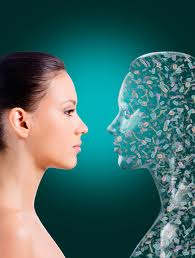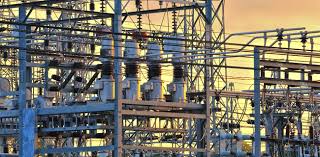Technology has become perhaps greatest agent of change in modern world. While never without risk, positive technological breakthroughs promise innovative solutions to most pressing global challenges of our time, from resource scarcity to global environmental change. Nevertheless, a lack of suitable investment outdated regulatory frameworks and gaps in public understanding prevent many promising technologies from achieving their potential.
World Economic Forum's Global Agenda Council on Emerging Technologies identifies recent key trends in technological change in its annual list of Top Emerging Technologies. By highlighting most important technological breakthroughs, Council aims to raise awareness of their potential and contribute to closing gaps in investment, regulation and public understanding. For 2014, Council identified new technologies that could reshape our society in future.
Body-adapted Wearable Electronics:

Jogger runs around Chestnut Hill Reservoir in Boston From Google Glass to Fit bit wristband, wearable technology has generated significant attention over past year through most existing devices helping persons to better understand their personal health and fitness by monitoring exercise, heart rate, sleep patterns and so on. Sector is shifting beyond external wearables like wristbands or clip-on devices to "body-adapted" electronics that further push ever-shifting boundary between humans and technology.
New generation of wearable is designed to adapt to human body's shape at place of deployment. These wearable are typically tiny, packed with a wide range of sensors and a feedback system and camouflaged to make their use less intrusive and more socially acceptable. These virtually invisible devices include ear buds that monitor heart rate, sensors worn under clothes to track posture a temporary tattoo which tracks health vitals also haptic shoe soles that communicate GPS directions through vibration alerts felt by feet. Applications are many and varied: haptic shoes are presently proposed for helping blind people navigate although Google Glass has previously been worn by oncologists to assist in surgery via medical records and other visual information accessed by voice commands.
Technology analysts believe that success aspects for wearable products include device size, non-invasiveness and ability to measure multiple parameters and provide real-time feedback that improves user behaviour. Nevertheless, increased uptake also based on social acceptability as regards privacy. For example: concerns have been increased about wearable devices which use cameras for facial recognition and memory assistance. Suppose these challenges can be manage; analysts project hundreds of millions of devices in use by 2016.
Human Microbiome Therapeutics:

MRSA bacteria strain is seen in a petri dish in a microbiological laboratory in Berlin. Human body is perhaps more accurately explained as an ecosystem than as a single organism: microbial cells typically outnumber human cells by 10 to one. This human microbiome has been subject of intensifying research in past few years, with Human Microbiome Project in 2012 reporting results generated from 80 collaborating scientific institutions. They originate that more than 10,000 microbial species occupy human ecosystem, comprising trillions of cells and making up 1%-3% of body's mass.
Through advanced DNA sequencing, bioinformatics and culturing technologies, diverse microbe species that cohabitate with human body are being identified and characterized, with differences in their abundance correlated with disease and health.
It is increasingly understood that this plethora of microbes plays an important role in our survival: bacteria in gut, for example, allow humans to digest foods and absorb important nutrients that their bodies would otherwise not be able to access. On other hand, pathogens that are ubiquitous in humans can sometimes turn virulent and cause sickness or even death.
Attention is being focused on gut microbiome and its role in diseases ranging from infections to obesity, diabetes and inflammatory bowel disease. It is gradually more understood that antibiotic treatments that destroy gut flora can result in difficulties like Clostridium difficile infections, which can in rare cases lead to life-threatening complications. On other hand, a new generation of therapeutics comprising a subset of microbes found in healthy gut are under clinical development with a view to improving medical treatments. Advances in human microbiome technologies obviously signify an unprecedented way to develop new treatments for serious diseases and to improve general healthcare outcomes in our species.
Grid-scale Electricity Storage:
A tree stands near fog over central Bosnian town of Vitez on Lisac mountain range during sunset Electricity cannot be directly stored, so electrical grid managers should persistently ensure that overall demand from consumers is exactly matched by an equal amount of power fed into grid by generating stations. Because chemical energy in coal and gas can be stored in relatively large quantities, conventional fossil-fuelled power stations offer dispatch able energy available on demand, making grid management a relatively simple task. However, fossil fuels also release greenhouse gases, causing climate change - and many countries now goal to swap carbon based generators with a clean energy mix of renewable, nuclear or other non-fossil sources.

Clean energy sources, in particular wind and solar, can be highly intermittent; instead of generating electricity when customers and grid managers want it, they generate uncontrollable quantities only when favourable weather conditions allow. A scaled-up nuclear sector moreover present challenges due to its preferred operation as always-on base load. Hence, development of grid-scale electricity storage options has long been a "holy grail" for clean energy systems. To date, simply pumped storage hydropower can claim a major role however it is expensive, environmentally challenging and totally dependent on favourable geography.
There are signs to facilitate a range of new technologies is getting closer to cracking this challenge. Some, such as flow batteries may, in future, be able to store liquid chemical energy in large quantities analogous to storage of coal and gas. Various solid battery options are as well competing to store electricity in sufficiently energy-dense also cheaply available materials. Newly invented graphene super capacitors offer possibility of extremely rapid charging and discharging over many tens of thousands of cycles. Other options use kinetic potential energy such as large flywheels or underground storage of compressed air.
A more novel option being explored at medium scale in Germany is CO2 methanation via hydrogen electrolysis, where surplus electricity is used to split water into hydrogen and oxygen, with hydrogen later being reacted with waste carbon dioxide to form methane for later combustion - if necessary, to generate electricity. While round-trip efficiency of this and other options may be relatively low, clearly storage potential will have high economic value in future. It is too early to pick a winner but it appears that pace of technological growth in this field is moving more rapidly than ever, in our assessment, bringing a fundamental breakthrough more likely in near term.